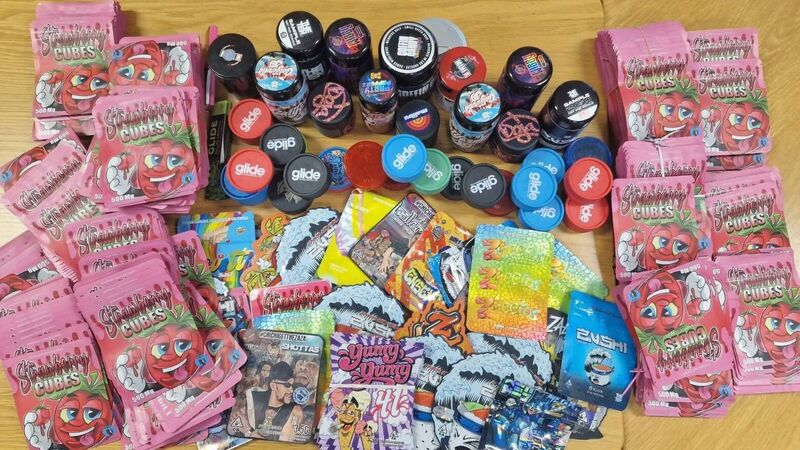EU warns of synthetic drug threat as seizures and overdose risks rise across Ireland

HHC can be purchased legally in jellies and vapes from stores in Ireland, despite repeated concerns of medical experts. File picture
Europe is facing an emerging threat from synthetic drugs — including artificial substances that mimic cannabis, heroin and stimulants — the EU drug agency has warned.
It has documented “unprecedented imports and seizures” of synthetic cathinones, which are chemically similar to cathinone, a stimulant.
The European Union Drug Agency also flags the “rising availability” of fake medicines containing highly potent nitazenes — a synthetic opioid that led to overdose outbreaks in Dublin and Cork at the end of 2023 and in several Irish prisons in 2024.
In its European Union Drug Report 2025, the agency highlights a doubling in the strength of cannabis resin over the last decade and the risks posed by high-potency cannabis extracts and edibles, like jellies.
The report said semi-synthetic cannabinoids have “spread rapidly” in recent years. One of these substances, HHC, has been linked to serious psychological effects, including among schoolchildren in Cork in November 2023.
HHC can be purchased legally in jellies and vapes from stores in Ireland, despite repeated concerns of medical experts. New provisions are being drafted to fill the legislative gap.
The report is also alerting users of the dance drug ecstasy that they are exposing themselves to “unpredictable health risks”, as the content of the active ingredient, MDMA, has “increased markedly”.
It said the average MDMA content in ecstasy tablets has increased from about 84mg in 2011 to between 138mg and 158mg now, with some tablets containing up to 350mg.
This warning chimes with an alert issued last week by the HSE, which said that one in four ecstasy pills it had tested in 2024 had more than 200mg of MDMA, which, it said, was more than double the typical adult dose.
Issuing the alert as part of its harm reduction strategy for the coming festival season, the HSE said high-strength MDMA pills, powders and crystals in circulation increased the risk of “getting very sick”, including accidental overdose.
The European Union Drug Agency report mentioned the HSE harm reduction campaign at music festivals, which included the testing of samples handed over to surrender bins, enabling live dissemination of rapid risk alerts to potential users.
The agency said that similar to the more extensive trend with cannabis, MDMA had been found in edibles — such as sweets and lollipops — in some countries.
“As with cannabis edibles, these products pose difficulties in regulating dosage and increase the risk of inadvertent consumption, especially a concern if they are consumed by minors,” the report said.
It said seizures of synthetic cathinones had increased from 2.1 tonnes in 2021, to 27 tonnes in 2022 and to 37 tonnes in 2023.
The report said while synthetic cathinones have been shown to have similar effects and potential harms as stimulants like MDMA and amphetamine, they are a broad range of substances, some of which may have “more severe” effects.
The drug agency said synthetic cannabinoids were widely available online and in shops and include flavoured jellies and vapes.
“Their accessibility and supposed legal status may attract both cannabis users and first-time users, potentially including youth and children,” it said.





